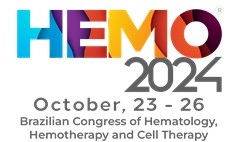
HEMO 2025 / III Simpósio Brasileiro de Citometria de Fluxo
Mais dadosAbout 4.9% of acute myeloid leukemias (AML) exhibit plasmacytoid dendritic cell (pDC) proliferation, commonly referred to as pDC-AML. This condition is associated with worse prognosis and treatment response when compared to AML without pDC proliferation. pDC from pDC-AML exhibit functional impairment and are present at different maturation stages, contrasting with other neoplasms that involve the proliferation of mature pDCs. In this context, understanding the immunophenotypic features unique to pDC-AML and those shared with other AML subtypes is important.
ObjectivesTo classify and quantify the maturation stages of pDCs in AML patients with and without pDC proliferation.
Material and methodsAnalysis of flow cytometry immunophenotyping data from AML patients with detectable pDCs, evaluated at a specialized hematology laboratory in Porto Alegre, Brazil, between March 2024 and June 2025. pDCs were classified into three maturational stages, as described in the literature. Stage I (immature) was defined by the expression of markers associated with cellular immaturity in pDCs, such as CD33, CD34, CD117, and dim CD45, along with the absence of maturity-associated markers (CD4 and CD304). Stage III (mature) was characterized by the opposite profile, with the absence of immaturity markers and expression of maturity markers. Stage II represented an intermediate stage, characterized by increasing expression of maturity markers and loss of immaturity markers.
ResultsTwenty-one AML patients without pDC proliferation and eight pDC-AML patients were included. The analysis revealed a predominance of Stage II pDC in both groups (66.7% in AML without pDC proliferation and 62.5% in pDC-AML). Among patients without pDC proliferation, 33.3% showed predominance of Stage III pDC, and none had predominance of Stage I. In pDC-AML, 27.6% showed predominance of Stage III pDC and 6.9% had predominance of Stage I pDC.
Discussion and conclusionAlthough the literature often attributes immaturity to pDCs in pDC-AML, particularly due to the absence of co-stimulatory molecules CD80 and CD86, our findings demonstrate a maturation process in these cells, with a predominance of intermediate maturation stages. The distribution of pDC maturation stages observed in both groups (AML with and without pDC proliferation) differs significantly from the pattern described for healthy individuals. Although it is believed that cellular immaturity may contribute to the functional impairment of pDCs in pDC-AML, the similarity in the maturation pattern between AML with and without pDC proliferation may suggest that the immaturity of this cell population is not the main determinant of its functional impairment and pDC-AML pathogenesis. These findings contribute to the understanding of this clinical entity and provide support for future research.







